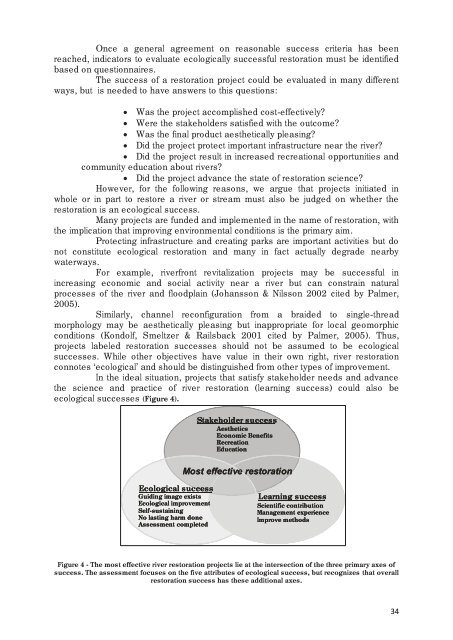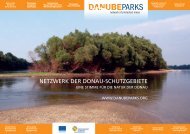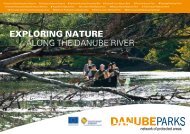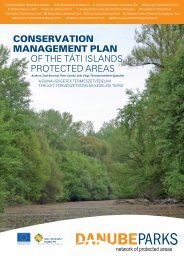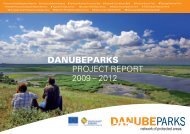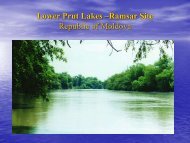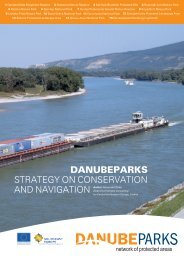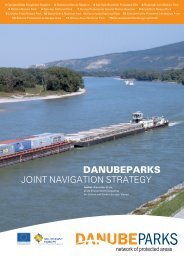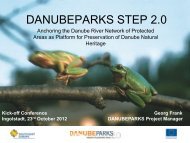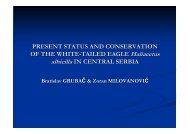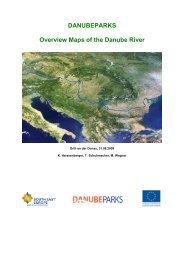Danube Rivers Morphology and Revitalization - DANUBEPARKS
Danube Rivers Morphology and Revitalization - DANUBEPARKS
Danube Rivers Morphology and Revitalization - DANUBEPARKS
Create successful ePaper yourself
Turn your PDF publications into a flip-book with our unique Google optimized e-Paper software.
Once a general agreement on reasonable success criteria has beenreached, indicators to evaluate ecologically successful restoration must be identifiedbased on questionnaires.The success of a restoration project could be evaluated in many differentways, but is needed to have answers to this questions: Was the project accomplished cost-effectively? Were the stakeholders satisfied with the outcome? Was the final product aesthetically pleasing? Did the project protect important infrastructure near the river? Did the project result in increased recreational opportunities <strong>and</strong>community education about rivers? Did the project advance the state of restoration science?However, for the following reasons, we argue that projects initiated inwhole or in part to restore a river or stream must also be judged on whether therestoration is an ecological success.Many projects are funded <strong>and</strong> implemented in the name of restoration, withthe implication that improving environmental conditions is the primary aim.Protecting infrastructure <strong>and</strong> creating parks are important activities but donot constitute ecological restoration <strong>and</strong> many in fact actually degrade nearbywaterways.For example, riverfront revitalization projects may be successful inincreasing economic <strong>and</strong> social activity near a river but can constrain naturalprocesses of the river <strong>and</strong> floodplain (Johansson & Nilsson 2002 cited by Palmer,2005).Similarly, channel reconfiguration from a braided to single-threadmorphology may be aesthetically pleasing but inappropriate for local geomorphicconditions (Kondolf, Smeltzer & Railsback 2001 cited by Palmer, 2005). Thus,projects labeled restoration successes should not be assumed to be ecologicalsuccesses. While other objectives have value in their own right, river restorationconnotes ‘ecological’ <strong>and</strong> should be distinguished from other types of improvement.In the ideal situation, projects that satisfy stakeholder needs <strong>and</strong> advancethe science <strong>and</strong> practice of river restoration (learning success) could also beecological successes (Figure 4).Stakeholder successAestheticsEconomic BenefitsRecreationEducationMost effective restorationEcological successGuiding image existsEcological improvementSelf-sustainingNo lasting harm doneAssessment completedLearning successScientific contributionManagement experienceImprove methodsFigure 4 - The most effective river restoration projects lie at the intersection of the three primary axes ofsuccess. The assessment focuses on the five attributes of ecological success, but recognizes that overallrestoration success has these additional axes.


